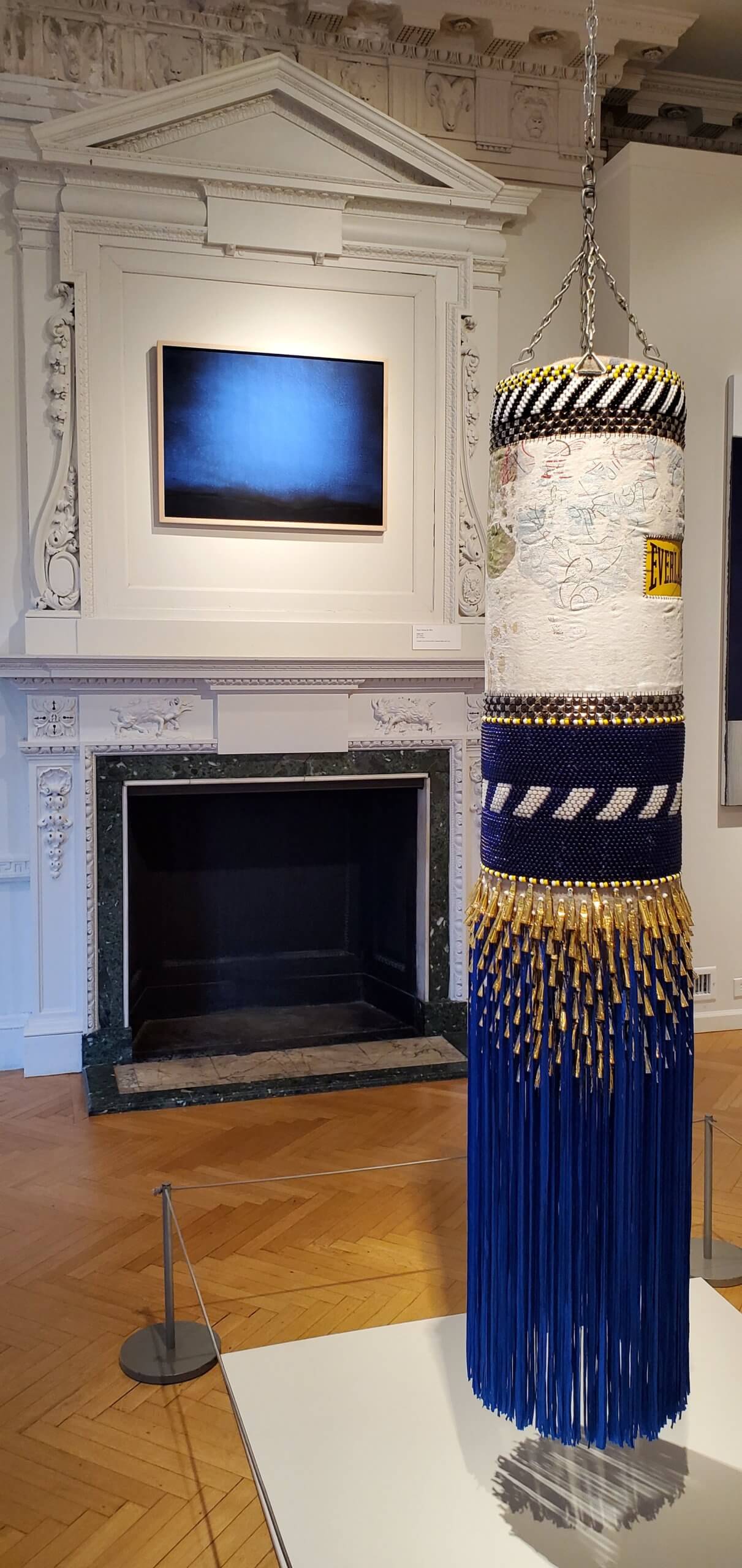
Jeffrey Gibson
Deep Blue Day, 2014
49.5 x 15 x 15 inches
Time after time, visitors have been pulled by the magnetic fascination of Jeffrey Gibson’s Deep Blue Day, which hangs dead center in the knockout second gallery gathering the power of the largest and most dynamic paintings in the show even as it emits its own undeniable energy with its exquisite beadwork and shimmering tassles. It is the narrative, however, that enchants. Stitched around the top of the heavy bag, so human in its replication of the boxer’s figure down to weight and muscle tone, is a painting that Gibson ran through the laundry on high heat three times at a moment of deep pessimism about his art. The faint trace elements of the original painting offer a delicate contrast to the bold chromaticism in the surrounding works. It took the idea of painting to another dimension in the show. For me, the heart punch of the sculpture is Gibson’s brilliantly ironic use of the equipment manufacturer’s name repeatd in the middle of a work of his own that he tried to efface: Everlast. As a Choctaw-Cherokee artist, who is gay and who has done so much for others as an advocate, Gibson is endowed with what many call a “platform,” but his work pulls more than it pushes in terms of the issues of our day. Its humanist significance reminds me of the way W.B. Yeats (who was an Irish senator and a Nobel-winning literary figure) defined the difference between his speeches and his lyrical poems: “We make out of the quarrel with others, rhetoric, but of the quarrel with ourselves, poetry.” Last year, Gibson won the Macarthur Foundation “genius” award, which cited the hybrid strengths of his process. His eloquence is captured in this extraordinary insight from a Brooklyn Rail interview (which fits perfectly with Bettina WitteVeen’s artist statement for his show):
It requires a great deal of energy to maintain binary systems that do not truly reflect the nuances of reality. Binary systems are used to provide us with some seemingly fixed points to place ourselves, but we actually all exist in between these points. The challenge is not only about creating a new system but also allowing the complications of reality to be present and to confront the current binary systems. My work acknowledges that we all exist at a crossroads of races, genders, cultures, politics, and philosophies among many other things. Someone asked me the other day about this notion of specificity versus universality, and I generally respond negatively to the idea of universality because it seems to want to level everyone’s experience as similar. But specificity confuses that because of everyone’s unique experiences and circumstances being so layered and different. I am drawn to learning about individual people’s experiences and how they relate to the larger world and explore the often complicated and specific place that they occupy amidst all of these binaries.
#NCMAblueperiod